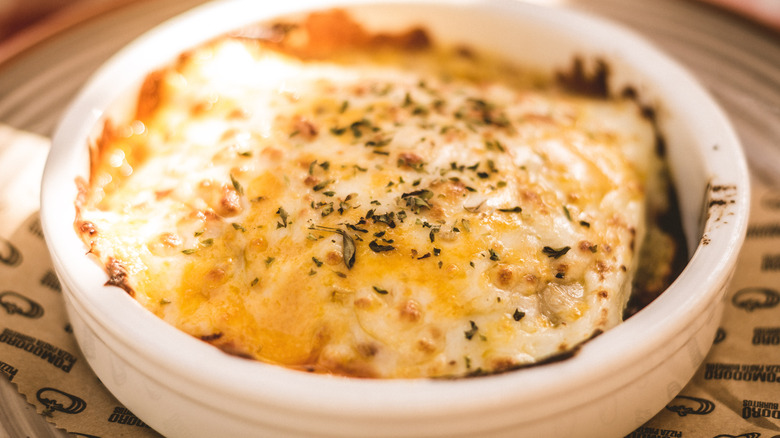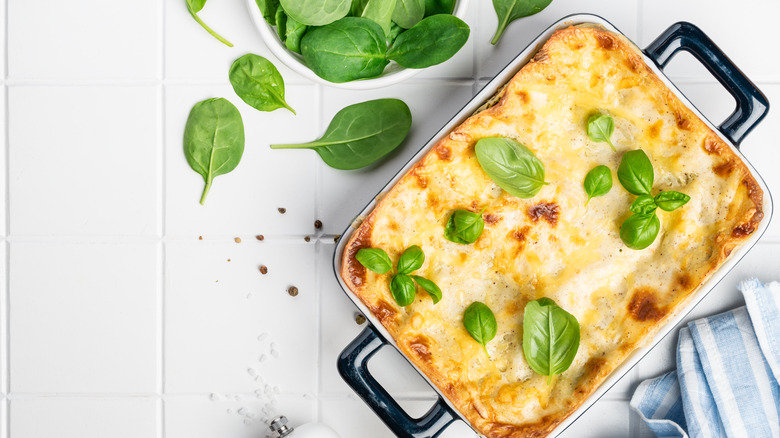One Of Italy's Most Traditional Lasagnas Is Made With Tiny Meatballs (And No Tomato Sauce)
When most Americans hear the word lasagna, they think of long, flat rectangles of pasta layered with ricotta and mozzarella cheeses and ragù — a hearty tomato sauce with meat. But the truth is, there are all kinds of lasagna in Italy, many of them traditional regional specialties. One such dish is lasagne al brodo, which doesn't have tomato sauce, is layered with tiny meatballs, and is served in brodo, meaning broth.
Lasagne al brodo (not to be confused with lasagna soup) hails from the Molise region in southern Italy. It forgoes tomato sauce in favor of a stock made from chicken and veal. The pasta layers are filled with small veal meatballs, shredded chicken and veal from the stock, mozzarella, Parmigiano-Reggiano cheese, and ladled stock broth. Once baked, portions are served in additional broth. This lasagna is a winter dish, perfect for cold weather, and is often served on Sundays and holidays due to the labor-intensive preparation — making the stock, cooking the meatballs, shredding the chicken and veal, and assembling the lasagna.
It's not surprising that there are many versions of lasagna, given its long history. A dish made of layered dough, meat, and cheese first appeared in an ancient Roman cookbook, and while the word's origin is unclear, it's theorized to come from lasanum (Latin for cooking pot) or laganum (ancient Greek and Roman for flat piece of bread).
You don't need tomatoes to make lasagna
Lasagne al brodo is just one of many Italian lasagnas that don't use tomatoes. Another example is lasagne all'Ascolana from the Marche region, made with a wine and white truffle sauce in which ground beef and chicken giblets — the heart, liver, and gizzard — are cooked. Also from Marche is vincisgrassi, a lasagna filled with porcini mushrooms, prosciutto, and béchamel, one of the French mother sauces made from butter, flour, and milk.
In Liguria, lasagne alla Genovese is made with a combination of béchamel and pesto alla genovese, the traditional paste-like mixture of basil, garlic, olive oil, pine nuts, and grated Pecorino or parmesan cheese. Béchamel is also a key ingredient in lasagne Bolognese, from the Emilia-Romagna region. This iconic version combines ragù, béchamel, and Parmigiano-Reggiano cheese. Although mozzarella and ricotta are often added, they aren't traditional ingredients in lasagne Bolognese.
In fact, the mix of ingredients and sauces that can be used to make lasagna is practically endless. The key components are lasagna pasta, sauce, and cheese, leaving plenty of room for creativity with different sauces and cheeses. Adding meat or vegetables to the layers opens up an even wider world of experimentation. Even the pasta itself can be swapped out for more adventurous options, such as pre-made ravioli or zucchini or eggplant slices cut lengthwise.


